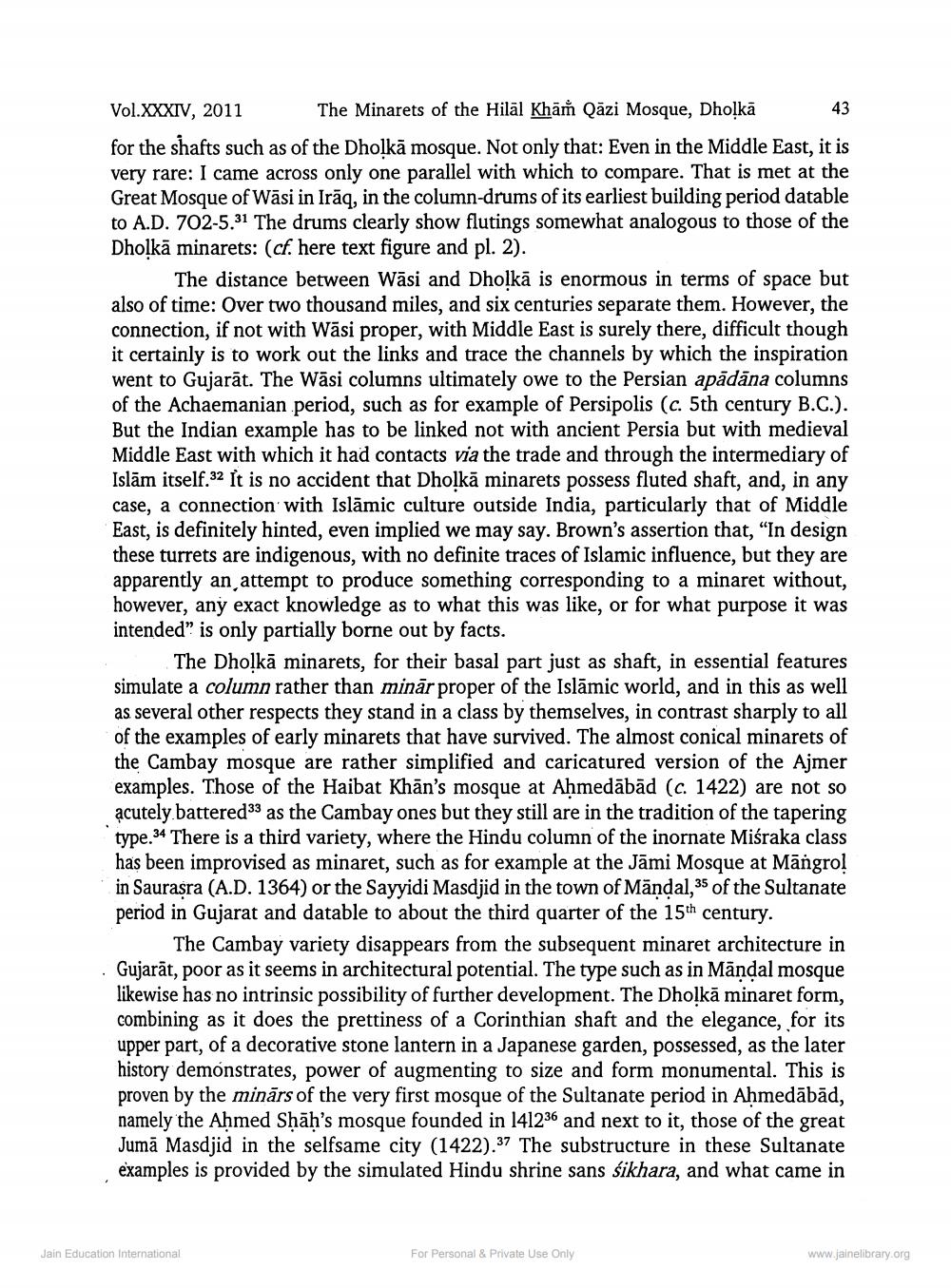________________
Vol.XXXIV, 2011 The Minarets of the Hilal Khāṁ Qāzi Mosque, Dholkā 43 for the shafts such as of the Dholkā mosque. Not only that: Even in the Middle East, it is very rare: I came across only one parallel with which to compare. That is met at the Great Mosque of Wāsi in Irāg, in the column-drums of its earliest building period datable to A.D. 702-5.31 The drums clearly show flutings somewhat analogous to those of the Dholkā minarets: (cf. here text figure and pl. 2).
The distance between Wāsi and Dholkā is enormous in terms of space but also of time: Over two thousand miles, and six centuries separate them. However, the connection, if not with Wāsi proper, with Middle East is surely there, difficult though it certainly is to work out the links and trace the channels by which the inspiration went to Gujarāt. The Wāsi columns ultimately owe to the Persian apădāna columns of the Achaemanian period, such as for example of Persipolis (c. 5th century B.C.). But the Indian example has to be linked not with ancient Persia but with medieval Middle East with which it had contacts via the trade and through the intermediary of Islām itself.32 It is no accident that Dholkā minarets possess fluted shaft, and, in any case, a connection with Islāmic culture outside India, particularly that of Middle East, is definitely hinted, even implied we may say. Brown's assertion that, “In design these turrets are indigenous, with no definite traces of Islamic influence, but they are apparently an attempt to produce something corresponding to a minaret without, however, any exact knowledge as to what this was like, or for what purpose it was intended” is only partially borne out by facts.
The Dholkā minarets, for their basal part just as shaft, in essential features simulate a column rather than minār proper of the Islāmic world, and in this as well as several other respects they stand in a class by themselves, in contrast sharply to all of the examples of early minarets that have survived. The almost conical minarets of the Cambay mosque are rather simplified and caricatured version of the Ajmer examples. Those of the Haibat Khān's mosque at Ahmedābād (c. 1422) are not so acutely. battered33 as the Cambay ones but they still are in the tradition of the tapering type.34 There is a third variety, where the Hindu column of the inornate Miśraka class has been improvised as minaret, such as for example at the Jāmi Mosque at Mangrol in Saurasra (A.D. 1364) or the Sayyidi Masdjid in the town of Māndal, 35 of the Sultanate period in Gujarat and datable to about the third quarter of the 15th century.
The Cambay variety disappears from the subsequent minaret architecture in Gujarāt, poor as it seems in architectural potential. The type such as in Māndal mosque likewise has no intrinsic possibility of further development. The Dholkā minaret form, combining as it does the prettiness of a Corinthian shaft and the elegance, for its upper part, of a decorative stone lantern in a Japanese garden, possessed, as the later history demonstrates, power of augmenting to size and form monumental. This is proven by the minārs of the very first mosque of the Sultanate period in Ahmedābād, namely the Ahmed Shāh's mosque founded in 141236 and next to it, those of the great Juma Masjid in the selfsame city (1422).37 The substructure in these Sultanate examples is provided by the simulated Hindu shrine sans śikhara, and what came in
Jain Education International
For Personal & Private Use Only
www.jainelibrary.org




